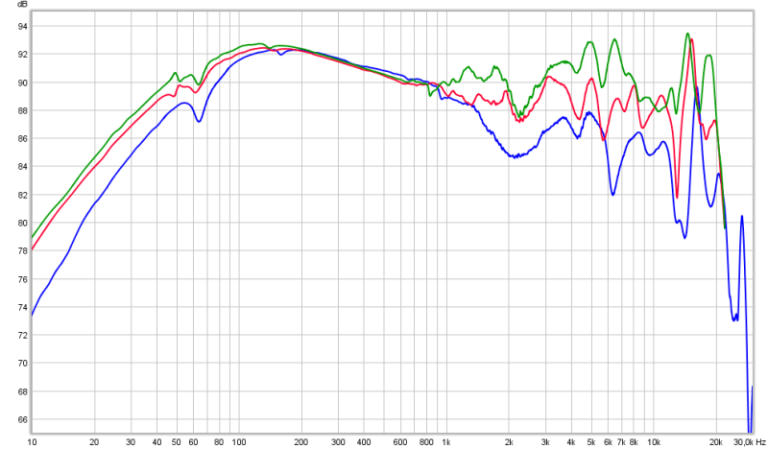I'm presently working on my first entirely-designed-by-me headphone, as a matter of fact! I had expected to already have it on the market by now, but the COVID logistics issues and the woes of building planar magnetic drivers from scratch have set me back a fair bit...
Well, my current version of the sheet is a complete trash fire, but I make no pretensions of being good at Excel in the slightest, so I'll attach it.
The Hopkins-Stryker equation gives us the actual sound pressure level at a given frequency as a sum of the direct and reverberant sound. It's application in Chris's method, as best I understand it, is to provide a weight in an average between two inputs: an HRTF representing the "direct sound" (this being a free field HRTF, 30 degrees would likely be best but I used 0 since it's what I had), and an HRTF representing the reverberant sound (this being a diffuse field HRTF). The other variables - speaker directivity as a function of frequency, room reverberation time as a function of frequency, room volume, source distance - serve to determine the ratio of the direct and indirect HRTFs in the resulting average.
I suspect Amir got those plots from the manual, in which case they will be generic - but yes, if
@amirm could get a copy of the unit-specific HRTF data posted, that'd be great! It may only be in disk/USB drive form with the unit that's stranded on the Fedex truck, however, so we may need to wait.
Well, your interpretation is a reasonable one, but the argument I was making is actually the converse: Since subjective FR is equal to on-head HpTF (which is indeed headphone transfer function) minus individual HRTF (which HRTF being set aside for the moment), the only case where varying subjective FR will be significant is if HRTFs vary in ways that exceed or differ from the ways HpTFs vary.
In some cases, this is incontrovertibly true - an IEM can't tell what the volume of my concha bowl is, or how my pinna is shaped, so one could reasonably expect a spread of subjective frequency response at higher frequencies for headphones that bypass much of the ear anatomy.
I'm arguing, however, against the premise that this is necessarily the case - I've measured headphones on nigh on a half dozen ears at this point, and while unit-ear specific interactions do exist, generally speaking the differences between any two headphones measured on any two ears have parallels; that is, the HRTF and HpTF are linked. Which, I mean...our ears are still a part of it for circumaural headphones, after all!


